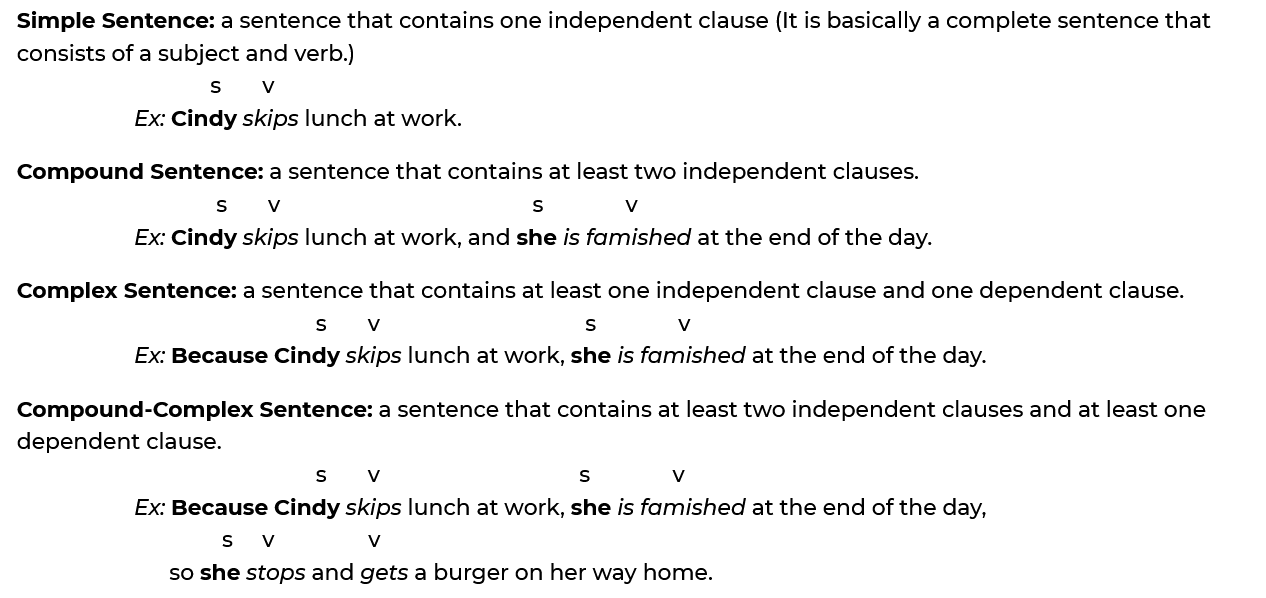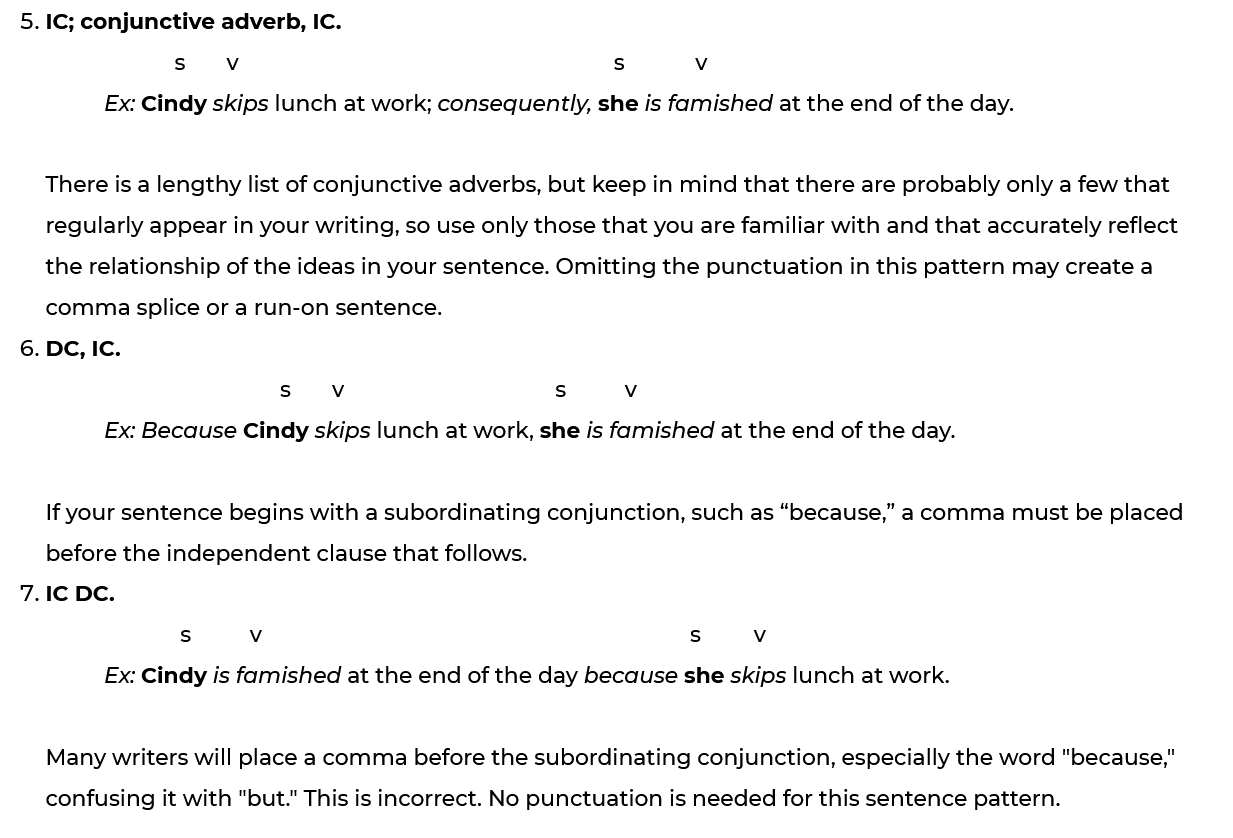Sentence Patterns
Sentence Patterns
An easy way to avoid fragments, comma splices, and run-on sentences is to recognize independent and dependent clauses in your sentence patterns and punctuate them accordingly.
CLAUSES:

SENTENCE STRUCTURES:

Understanding these sentence structures will help you avoid errors such as fragments, comma splices, and run-on sentences. Notice the following sentence patterns; pay particular attention to the punctuation patterns that can be used to join independent and dependent clauses.
Sentence Patterns:


Page last updated May 2, 2025.


